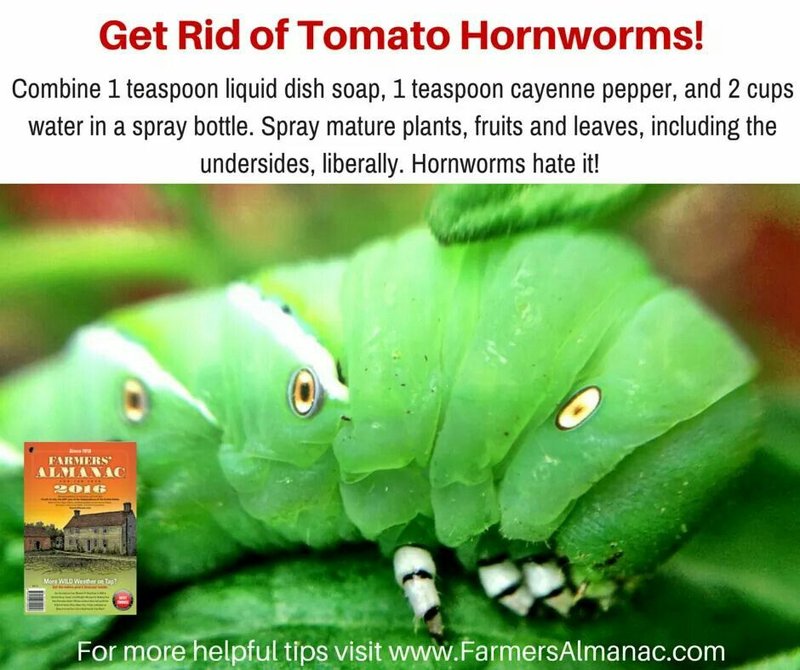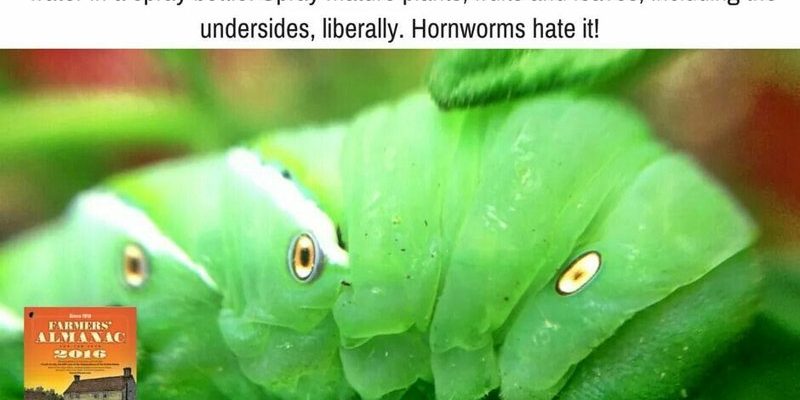
Hornworms, specifically the tobacco hornworm and the tomato hornworm, can do some serious damage. They blend in well with your plants, making them hard to spot until they’ve already had their feast. The good news? There are plenty of tips and tricks to prevent them from becoming a problem in your raised beds. Let’s dive into some practical strategies for keeping your garden healthy and hornworm-free.
What Are Hornworms and Why Are They a Problem?
Hornworms are the larval stage of moths, typically the five-spotted hawk moth or the tobacco hornworm moth. They can grow quite large, up to four inches in length, and they have a distinctive horn-like protrusion on their back—hence the name. While they might look kind of cool, their appetite can leave you with sad, defoliated plants.
These pests primarily feed on the leaves of nightshade family plants, which include tomatoes, peppers, and eggplants. If you’re growing any of these in your raised beds, it’s vital to be on high alert. A few hornworms can quickly turn into dozens if they’re left unchecked, and before long, your garden could be in serious trouble.
In terms of ecology, hornworms are part of a natural cycle. However, in a garden setting, they can wreak havoc. Let’s talk about how to prevent them from making themselves at home in your raised beds.
1. Regular Monitoring and Inspection
Keeping an eye on your plants is one of the best things you can do. Honestly, it doesn’t take much time, and it pays off in the long run. Make it a habit to check your plants at least once a week. Look closely under leaves and in the stems, as hornworms love to hide there.
When you spot one, it’s not just about the immediate removal. Act fast! Hand-picking them is usually the easiest way to control their numbers. You might think, “Ew, I don’t want to touch that!” But wearing gloves can help make the task a bit more palatable. Just remember, if you catch them early, you can prevent them from causing severe damage.
Here’s a quick checklist for your inspections:
- Look for large green caterpillars, often blending in with the foliage.
- Check for frass (caterpillar droppings); this is a telltale sign of their presence.
- Observe for any signs of plant damage, like chewed leaves or wilted stems.
2. Plant Companions Wisely
Companion planting is like matchmaking for your garden. Some plants can help keep hornworms away, while others attract beneficial insects. For example, planting **oregano** or **basil** alongside your tomatoes can deter pests. Plus, these herbs are great for cooking!
Additionally, consider adding flowers like **marigolds**. They attract pollinators and can keep harmful pests at bay. Here’s the thing: a diverse garden helps create a balanced ecosystem. The more variety you have, the better your chances of confusing pests—and hornworms are no exception.
If you have the space, try incorporating some of these plants:
- **Basil**: Great for flavor and deterring pests.
- **Marigolds**: Known for repelling many garden pests.
- **Nasturtiums**: These can draw hornworms away from your other plants.
3. Use Natural Predators
Mother Nature has her own way of keeping the balance. One of the most effective methods to control hornworm populations is to introduce their natural predators. You might be wondering, “What does that mean?”
**Wasps**, like the parasitic braconid wasp, specifically target hornworms. They lay their eggs inside the hornworm, ultimately killing it. While it might sound a bit gruesome, it’s a natural way to manage pest populations without using chemicals.
If you’re interested in this approach, consider planting flowers that attract these beneficial insects. Also, avoid using pesticides that can harm these helpful wasps. You want to keep your garden a friendly environment for them!
4. Maintain Healthy Soil
You’ve probably heard the saying, “Healthy soil, healthy plants.” This couldn’t be truer! When your plants are strong and vigorous, they’re less likely to succumb to pest damage. To maintain healthy soil, focus on proper nutrients and moisture levels.
Start by regularly adding **organic matter** to your raised beds. This could be compost, well-rotted manure, or green manure crops. Healthy soil promotes vigorous plant growth, making it hard for hornworms to find a weak spot.
Here are a few key practices to keep in mind:
- Rotate your crops yearly to prevent pest build-up.
- Test your soil to ensure it has the right pH and nutrient levels.
- Water your plants appropriately to minimize stress.
5. Chemical Controls: When and How to Use
In some cases, despite your best efforts, hornworms might still invade. If so, you might want to consider using pesticides as a last resort. But before you grab anything off the shelf, it’s crucial to choose wisely and read the labels.
Opt for targeted insecticides, such as those containing **Bacillus thuringiensis (Bt)**. This is a natural bacterium that only affects caterpillars like hornworms, leaving other beneficial insects unharmed. It essentially disrupts their ability to eat, helping to reduce the population effectively.
Before using any pesticide, remember to:
- Read the label carefully to understand how and when to apply.
- Avoid applying during peak pollinator hours—in the early morning or late evening is best.
- Always follow the recommended guidelines for safety.
6. Keep Your Garden Clean
A tidy garden is less attractive to pests, including hornworms. After harvest, don’t leave any debris or plant waste lying around. These leftovers can be a perfect hiding spot for pests and their eggs.
Make it a practice to clear away dead leaves, fallen fruit, and spent plants. This simple act of cleanliness can go a long way in keeping your garden a hornworm-free zone. You might find it helpful to create a **compost pile** for all the organic waste, which can be a great resource for future planting.
Here’s a quick list of garden-cleaning tasks:
- Remove dead plants and weeds that can harbor pests.
- Clean up any fallen fruit or vegetables that may attract pests.
- Consider winterizing your beds to prevent overwintering pests.
7. Know the Signs of Hornworm Infestation
Being able to spot the signs of hornworm activity can save your garden from devastation. Look out for a few key indicators:
- **Chewed leaves**: This is often the first sign; look for irregular holes.
- **Frass**: As mentioned earlier, caterpillar droppings can signal their presence.
- **Damage on your plants**: You might see plants wilting or exhibiting poor growth.
By understanding the signs and addressing them quickly, you can minimize the damage hornworms can cause. Always remember that the sooner you catch a problem, the easier it is to deal with.
Keeping hornworms out of your raised beds is all about being vigilant and proactive. Regular inspections, companion planting, promoting natural predators, and maintaining healthy soil can significantly reduce the risk of these pests.
While it’s impossible to completely eliminate the chance of hornworms showing up, you can certainly make your garden a less inviting place for them. With these tips in hand, your garden can thrive and provide the bounty you’ve been dreaming of. Happy gardening!

